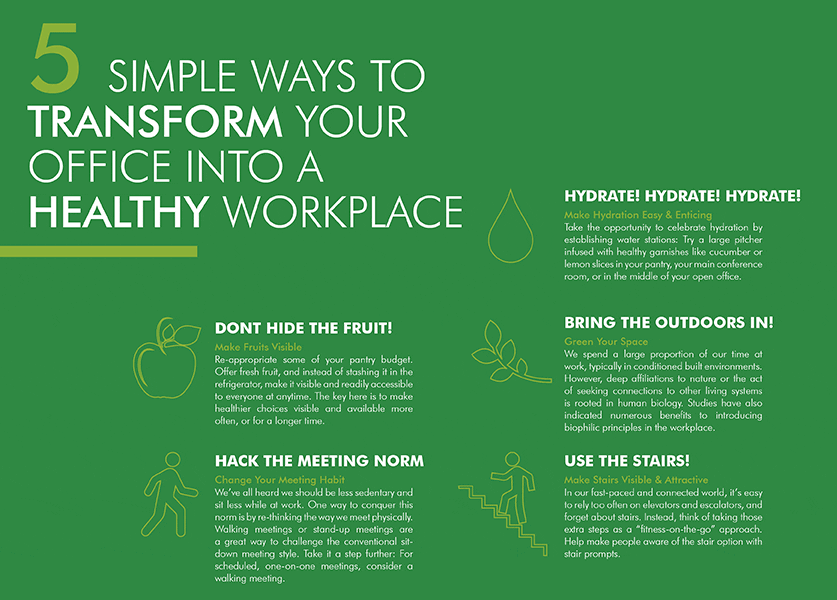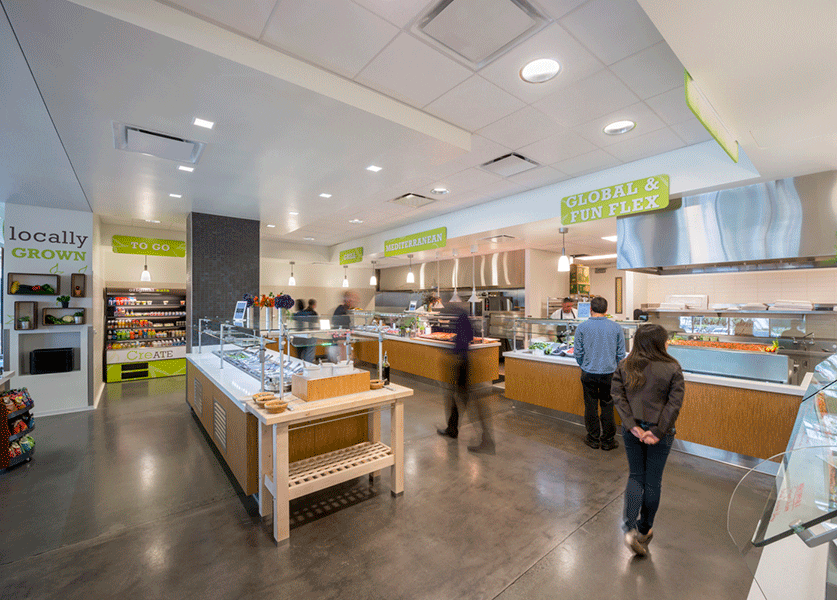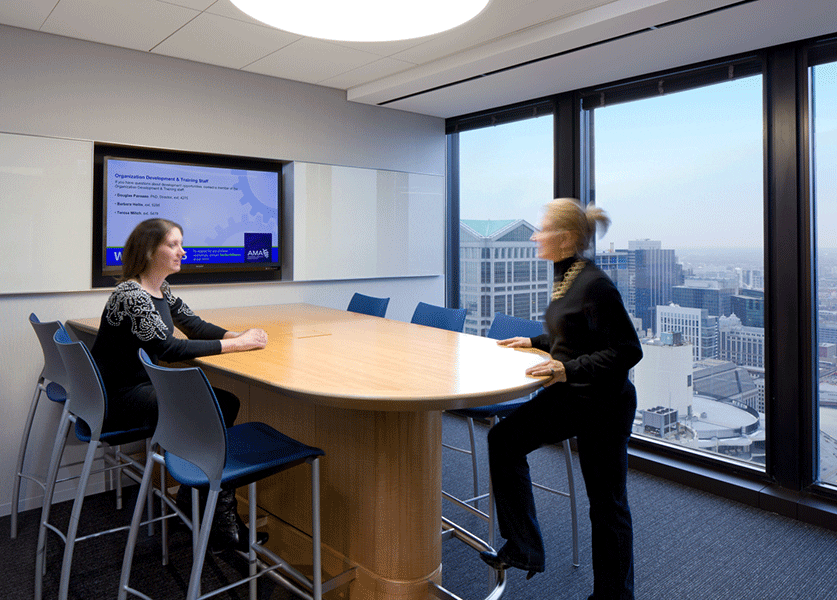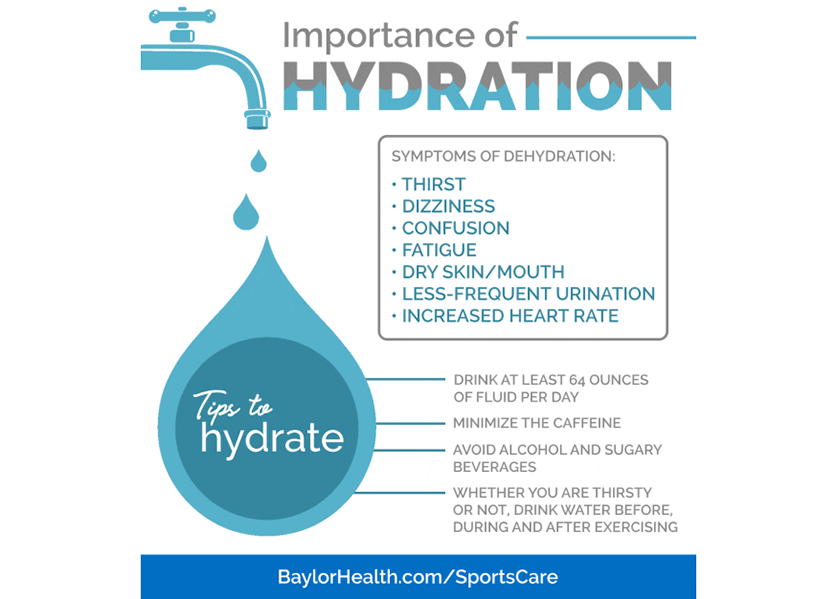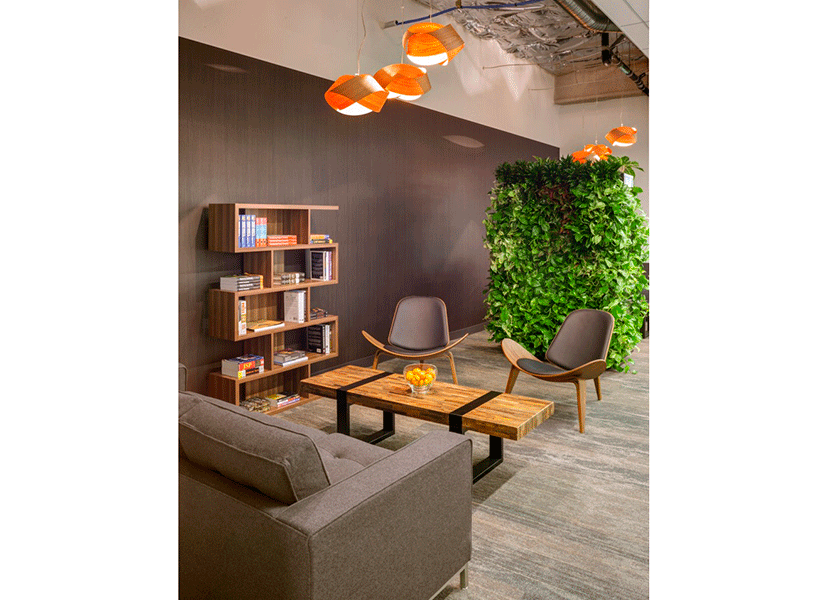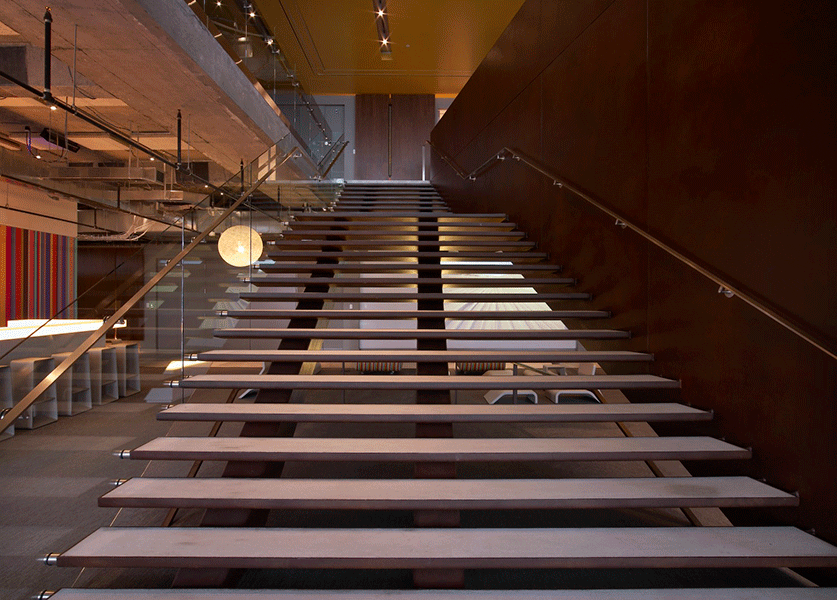More...
By Shih Hua Liong | Director of Workplace Strategy | July 14, 2015
SHORT OF A FULL RENOVATION, HERE ARE A FEW SUGGESTIONS TO PROMOTE WELLNESS AT WORK.
There has been a shift in workplace discussions that is placing a greater emphasis on wellness. As designers of the workplace, we can help employees make healthier choices throughout their workday. We achieve this through choice architecture—or designing various options for employees to work and interact with colleagues and their environment—and intentional but subtle gestures.
Here are a few simple ways to reinforce health and wellness at the office.
1. DON’T HIDE THE FRUIT!
We all know that eating more fruit and vegetables is good for us, but with our busy schedules how many of us actually make a conscious effort to eat fresh foods, especially while at work? Re-appropriate some of your pantry budget. Offer fresh fruit, and instead of stashing it in the refrigerator, make it visible and readily accessible to everyone at anytime. Even just a few basic fresh fruit options will go a long way. Brian Wansink, professor of Consumer Behavior at Cornell University in the Dyson School of Business and Director of the Cornell Food and Brand Lab, found in the Smarter Lunchrooms Movement to guide smarter choices that putting fresh fruit in a decorative bowl under a light increased fruit consumption by 27 percent.
2. HACK THE MEETING NORM
We’ve all heard we should be less sedentary and sit less while at work. One way to conquer this norm is by re-thinking the way we meet physically. Stand-up meetings are a great way to challenge the conventional sit-down meeting style, and to rev staff’s energy levels. Physiologically, standing helps release endorphins, which increase energy levels and could help you be more alert and engaged. Without the traditional cues to take a seat for a meeting, you may generate favor among your staff for positioning your appointments to achieve dual success: health and productivity. This solution will likely cost you nothing, or close to it.
Take it a step further: For scheduled, one-on-one meetings, consider a walking meeting. Author and corporate consultant Nilofer Merchant suggests this minor tweak to your workday might have a big impact on your life and health. For added opportunities to be active, one or two treadmill or cycle stations can be set up in most corners or nooks around the office. You’d be amazed at how just 15 minutes at any of these mobile stations can spike metabolism—and meeting productivity.
3. MAKE HYDRATION EASY AND ENTICING
Instead of bottled water, which uses thousands of PET containers that may or may not be deposited into a recycling bin, investing in a water filter for your office is an easy way to provide everyone with clean water. Take the opportunity to celebrate hydration by establishing water stations: Try a large pitcher infused with healthy garnishes like cucumber or lemon slices (both have been linked to measurable detoxification benefits) in your pantry, your main conference room, or in the middle of your open office. Your team will be grateful for adding some flavor to their day! In our Boston office, a pitcher of blackberry-mint infused water is located at the transition between amenity space and the workstation area.
Why is water so important? According to the American Heart Association, water is the best thing for most people to drink to stay hydrated. “Hydration is important because the body is comprised mostly of water, and the proper balance between water and electrolytes in our bodies really determines how most of our systems function, including nerves and muscles,” says Larry Kenney, PhD, a professor of physiology and kinesiology at Penn State.
4. BRING THE OUTDOORS IN
We spend a large proportion of our time at work, typically in conditioned built environments. However, deep affiliations to nature or the act of seeking connections to other living systems is rooted in human biology. Studies have also indicated numerous benefits to introducing biophilic principles in the workplace. In an interview in Yale University’s Environment 360, social ecologist Stephen Kellert asserts that people “learn better, work more comfortably, and recuperate more successfully in buildings that echo the environment in which the human species evolved.”
Whether with physical plants, or visual and sensory connections to nature, spending time around natural greenery is proven to lower cortisol levels, a chemical in the body that directly contributes to stress. The International WELL Building Institute, the certifying body of the WELL Building Standard, purports that our buildings and work environments should be developed with people’s health and wellness in mind. As such, the WELL Building Standard looks at seven factors that impact occupant health, which includes the application of biophilic principles.
5. TAKE THE STAIRS, ONE STEP AT A TIME
In our fast-paced and connected world, it’s easy to rely too often on elevators and escalators, and forget about stairs. Instead, think of taking those extra steps as a “fitness-on-the-go” approach. If there isn’t an interconnected, central stair in the workplace, exit stairs are another good option. Help make people aware of the stair option with stair prompts – another low-cost intervention approach. Also known as point-of-decision prompts, these motivational signs placed in or near stairwells or at the base of elevators and escalators encourage individuals to increase stair use. Research has shown that visibility of stairs increases their use by a median of 50%, and regular use of stairwells increases familiarity with its location and promotes safety. Our San Francisco office hosts regular, monthly stair climbing competitions to encourage the stairs over the elevator.
Whether we realize it or not, consciously or unconsciously, so much of our behavior is often triggered by environmental cues. In addition to promoting wellness programs and perks, we can also leverage and apply various research findings from behavioral economics and psychology. These five suggestions are just some of the many ways we can begin to adopt these small but positive “nudges” in the office. As planners, facilitators, and stewards of the workplace, we can help influence—in a positive way—the choices people make in their daily lives by making healthy choices easy and intuitive.
What is Biophilic Design?
Learn about the 14 patterns of biophilic design from LEED and WELL certified architect, Diane Rogers. Click below to read the post.
You don't always have to renovate to create a healthy workplace!

